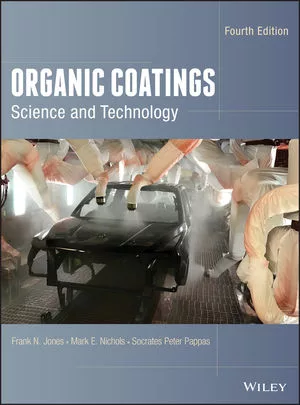Evonik Develops New Sustainability Strategy

Evonik’s Coating Additives business line is introducing a new holistic approach to sustainability that minimizes the environmental footprint and maximizes the handprint of the final coating. (Image courtesy of Evonik.)
Evonik has developed a strategy that goes beyond its own additives by making the formulation and the final product the focus of all its activities. Sustainability in the coatings and inks industry is often reduced to “bio-based solutions.” However, to evaluate a coating’s true environmental impact, many more aspects need to be considered. With a theme of “Sustainability goes deeper than the surface,” Evonik’s Coating Additives business line is addressing this challenge by introducing a new holistic approach to sustainability that minimizes the environmental footprint and maximizes the handprint of the final coating.
“Sustainability is about so much more than just being green,” said Gaetano Blanda, head of Evonik Coating Additives. “It’s about the consistent viability of saving time, materials, and energy. We are convinced that to produce truly sustainable products the formulation itself must be more environmentally friendly and safer.”
Accordingly, Evonik Coating Additives has bundled its new sustainability approach into seven so-called handprint effects. These seven handprint effects influence different steps of the value chain, from the manufacturing via the end use of coated or printed articles to the disposal or recycling.
“The handprint of a product is the difference between an established and an improved condition of a single environmental impact,” said Tim-Frederic Sloot, head of Sustainability at Evonik Coating Additives. “For example, when our product enables the formulator to significantly reduce the VOC content in a coating’s footprint—then the difference to the VOC content in the reference coating is the handprint of our additive.”
Four handprint effects focus mainly on the formulation and application step of coatings and inks: Safe Use, Production Efficiency, VOC Reduction, and Sustainable Feedstocks. Concerning safe use, Evonik reports that its Coating Additives team proactively carries out individual actions to reduce safety-related risks of its portfolio (e.g., by replacing hazardous components). To improve production efficiency, solutions are offered that optimize and reduce the amount of material and utility needed from customers (e.g., by reducing energy usage during the grinding step of a formulation). The existing portfolio of additives and resins that provide solutions for VOC reduction is continuously expanded. In addition, the increasing number of bio-based products included in Evonik’s portfolio further addresses the growing need to replace fossil raw materials with more sustainable feedstocks.
The next two handprint effects, Durability and Labels/Compliance, have their highest relevance in the end-use phase of coated articles. A more durable coating significantly reduces the need for maintenance or replacement, resulting in substantial savings of raw materials and emissions. To address the Labels/Compliance effect, Evonik’s regulatory experts evaluate the suitability of relevant products for compliant coatings and inks, providing customers with regulatory information for the whole portfolio.
The seventh and last handprint effect, Circular Solutions, focuses on the end of life of coated and printed articles. As a key member of Evonik’s Circular Plastics Program, the Coating Additives business line focuses the development of its portfolio on circular solutions for paints, coatings, and inks.
In addition to maximizing the handprint, the Coating Additives business reportedly also minimizes its footprint throughout all its processes by using resources more efficiently and reducing emissions. For that purpose, a comprehensive portfolio sustainability assessment (PSA) using the framework of the World Business Council for Sustainable Development (WBCSD) is carried out. Based on the PSA, it is possible to identify products that have a clear positive sustainability profile; these products are then named next-generation solutions. It is also possible to identify products with critical sustainability profiles and initiate actions to improve the profile. As of today, Evonik reports that approximately 50% of its coating additives portfolio is classified as next-generation solutions.
Evonik’s efforts to reduce its own greenhouse gas emissions also include increasing the transparency of its processes. This is done by monitoring the specific energy use and material streams at individual production sites and by life cycle assessments (LCAs) on a product level. In a next step, experts from Evonik’s Technology & Engineering department will also identify the most attractive reduction potentials and carry out projects to realize them.
For more information, visit www.coating-additives.com.
Looking for a reprint of this article?
From high-res PDFs to custom plaques, order your copy today!





